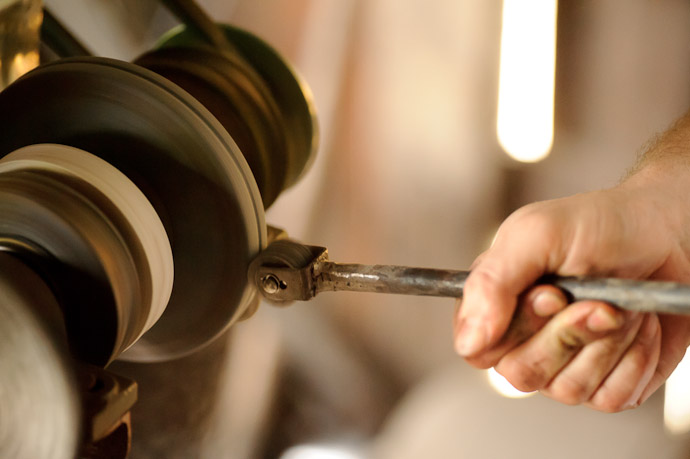
Nikon D700 + Voigtländer 125mm f/2.5 — 1/250 sec, f/2.5, ISO 6400 — map & image data — nearby photos
Conditioning a Grinding Wheel
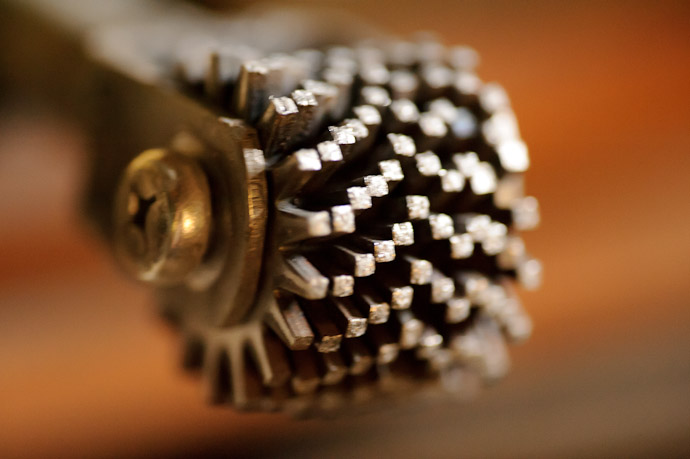
Nikon D700 + Voigtländer 125mm f/2.5 — 1/80 sec, f/2.5, ISO 6400 — map & image data — nearby photos
Business End
( a bit fuzzy here, but it was really dark, so it's not too bad for 1/80 sec at 125mm )
While in Pierre Nadeau's smithy that I wrote about yesterday, I noticed this odd-looking tool lying around, and like many of the odd-looking things lying around the 100-year-old workshop, I had no clue what it was (unlike the majority who answered the “What am I?” quiz correctly the other day).
When I asked Pierre about it, he demonstrated that it conditions a grinding wheel used for sharpening knives and the like. I don't think he uses it when he makes swords, but he also makes various tools on order, so I'm sure his grinding wheel gets a lot of use.
There are actually a couple of different grinding wheels in the small space... here's another one whose pedestal has developed quite a patina of grinding-wheel dust over the years...

Nikon D700 + Voigtländer 125mm f/2.5 — 1/1000 sec, f/2.5, ISO 6400 — map & image data — nearby photos
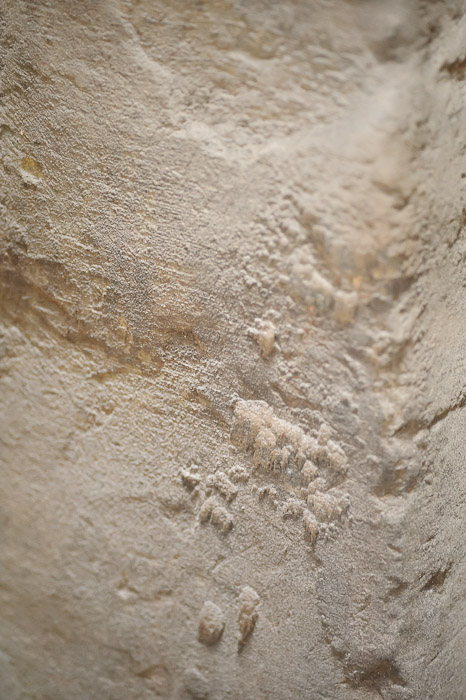
Nikon D700 + Voigtländer 125mm f/2.5 — 1/800 sec, f/2.5, ISO 6400 — map & image data — nearby photos
Along the same lines, in the 1960s the workshop was fitted with various mechanical tools all run from a single electric engine. Because the engine was the most expensive part, a series of pullies and wheels were used to distribute the energy out to multiple tools, such as the big pounder thinging seen yesterday, which I think is the only thing still hooked up to it.
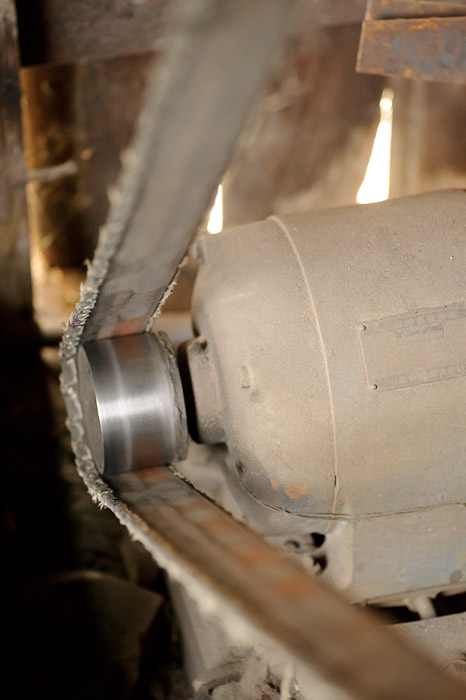
Nikon D700 + Voigtländer 125mm f/2.5 — 1/400 sec, f/2.5, ISO 6400 — map & image data — nearby photos
Source of Power
precariously distributed via pully
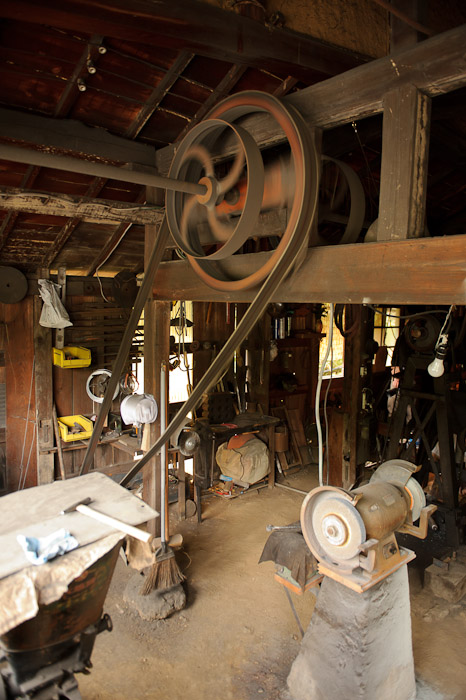
Nikon D700 + Nikkor 24-70mm f/2.8 @ 24mm — 1/100 sec, f/2.8, ISO 1800 — map & image data — nearby photos
In Action
just waiting to take off a limb or two of anyone not paying due attention
Jeff, I believe “the big pounding thingy” to which you refer is called a power hammer. Also, I was astounded to read that you take your shoes off in such a place. Do you then throw your socks away?? What with the dust, the dirt floor, the specks of metal filings and bits of slag, they couldn’t possibly come clean again. Nor could socks protect the feet from hot coals or metal slivers. Odd custom to us outsiders.
You take off the shoes only to step into position on the circular straw mat, which is kept clean. Sparks of metal and slag are blocked by your body anyway, so it doesn’t take much effort to keep one circle of physical clean, which does wonders for one’s mental state. —Jeffy